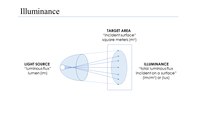Luminous exitance

Luminous exitance is like how bright something is. Imagine you have a flashlight, and you shine it on a wall. The amount of light that comes out of the flashlight and hits the wall is called the luminous exitance.
Just like how some flashlights are brighter than others, some things are also brighter than others. For example, the sun is very bright because it emits a lot of light, while a small nightlight is not as bright because it doesn't emit as much light.
Scientists use luminous exitance to measure how bright things are. They use special tools called photometers that can measure the amount of light that is coming from an object. This helps them understand how much light is being emitted by different light sources, and how much light is needed to see things in different environments.
So, luminous exitance is basically just a fancy word for how bright something is, and scientists use it to measure and understand light.
Just like how some flashlights are brighter than others, some things are also brighter than others. For example, the sun is very bright because it emits a lot of light, while a small nightlight is not as bright because it doesn't emit as much light.
Scientists use luminous exitance to measure how bright things are. They use special tools called photometers that can measure the amount of light that is coming from an object. This helps them understand how much light is being emitted by different light sources, and how much light is needed to see things in different environments.
So, luminous exitance is basically just a fancy word for how bright something is, and scientists use it to measure and understand light.
Related topics others have asked about:
